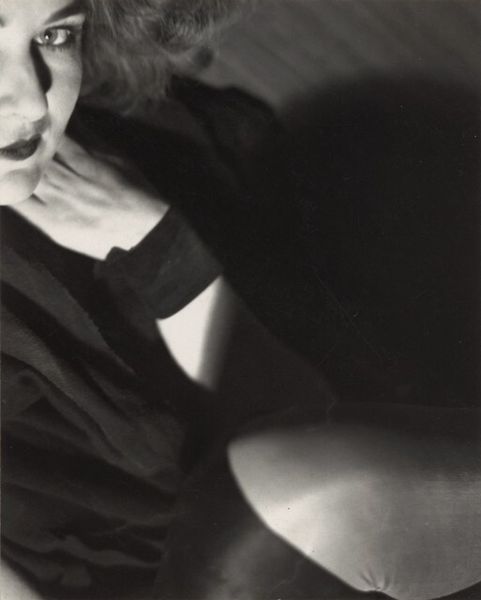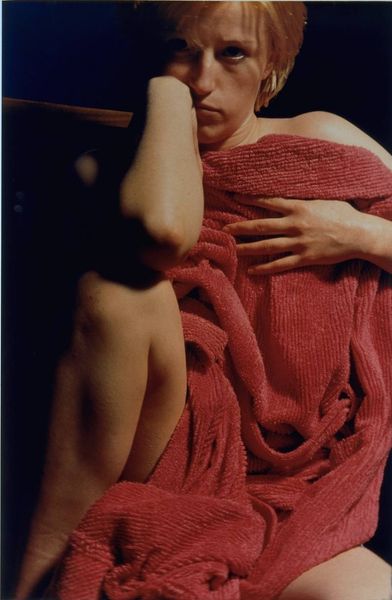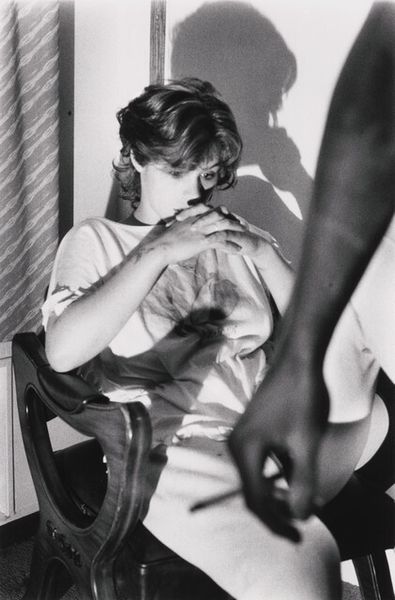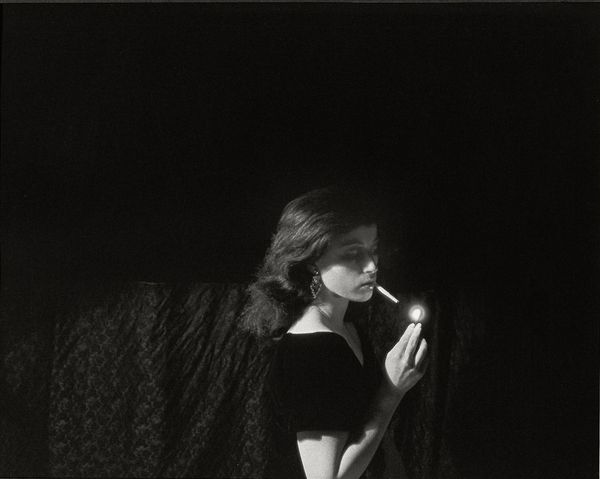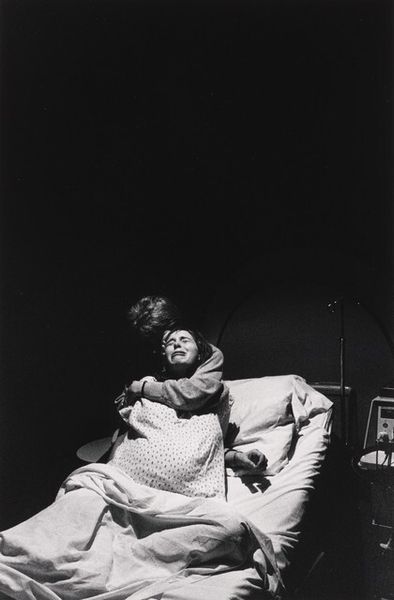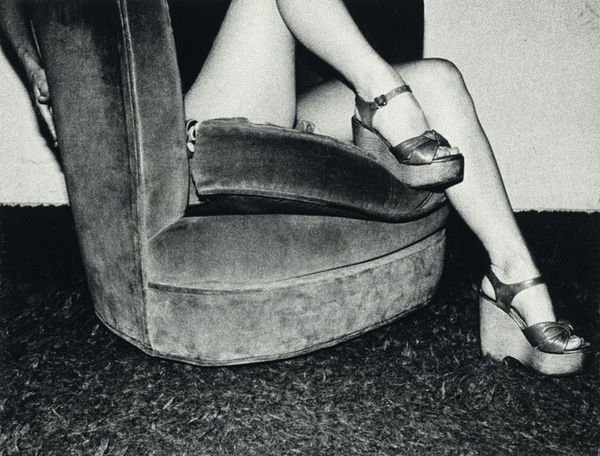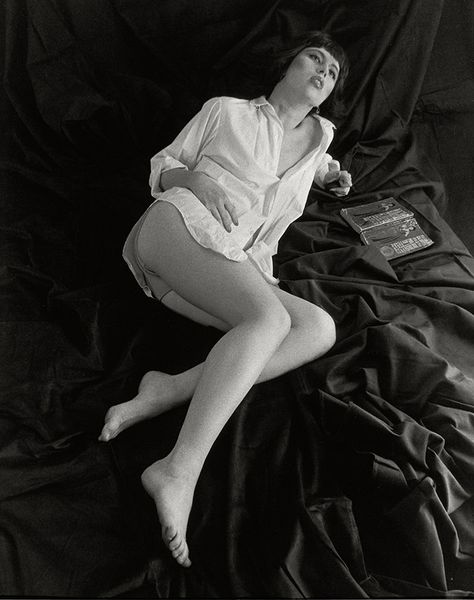
c-print, photography
#
portrait
#
contemporary
#
self-portrait
#
conceptual-art
#
c-print
#
photography
#
neo-expressionism
#
identity-politics
#
modernism
Copyright: Cindy Sherman,Fair Use
Editor: This is Cindy Sherman's "Untitled #100," a C-print photograph from 1982. There’s a sense of vulnerability, almost cinematic in its lighting. The woman, presumably Sherman herself, looks contemplative, maybe even sad. What can you tell me about this piece? Curator: Sherman’s work in the early 80s was deeply engaged with identity politics, fueled by feminist discourse challenging the male gaze in art. These “Untitled Film Stills,” as they’re often grouped, are not so much portraits of Sherman, the individual, but portraits of culturally constructed femininity. Editor: So, the sadness I’m seeing – is that performative? Is it a commentary on how women are portrayed in film? Curator: Precisely. Consider the mise-en-scène: the harsh lighting, the seemingly domestic interior, her melancholic pose. It’s as if she's enacting a scene from a low-budget movie, maybe a melodrama. It’s designed to elicit an emotional response but simultaneously asks us to question why we're having that response. Sherman cleverly uses the power of visual imagery and film tropes to question cultural representations. Think about how galleries and museums contribute to the narrative around what kind of images have value. Why do we display certain bodies and faces and not others? Editor: That makes me think about the title – "Untitled." Is it Sherman’s way of leaving it open to interpretation and resisting a singular narrative? Curator: Absolutely. The “Untitled” series challenges the art institution's desire for definitive meaning, disrupting our expectations. Instead of providing a label, she's presenting a complex social commentary about womanhood, representation, and spectatorship in a male-dominated field. Editor: It's fascinating how one photograph can carry so much social weight. It definitely changes how I view similar images. Curator: That's the beauty of understanding the cultural context, isn't it? It opens our eyes to the underlying narratives at play in what we see.
Comments
No comments
Be the first to comment and join the conversation on the ultimate creative platform.
